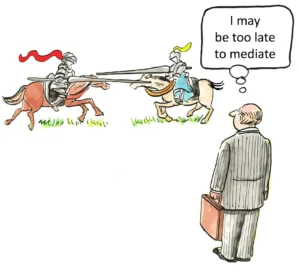The Impact of Expedited Removal on Due Process Rights
The intersection of immigration enforcement and constitutional protections presents one of the most contentious legal battlegrounds in American jurisprudence. At the heart of this conflict lies expedited removal, a streamlined deportation procedure that allows immigration officers to deport certain non-citizens without the judicial review typically afforded in removal proceedings. This mechanism, designed to enhance efficiency in immigration enforcement, raises profound questions about the scope and application of due process rights for non-citizens within U.S. borders.
The tension between expedited removal and due process reflects broader debates about national sovereignty, constitutional protections, and the proper balance between efficient immigration enforcement and fundamental fairness. As the current administration expands the use of expedited removal to its fullest statutory extent, these questions have taken on renewed urgency and significance in our national discourse.
The constitutional implications of expedited removal procedures demand careful examination. While the government possesses legitimate interests in controlling immigration and securing its borders, these interests must be balanced against the Constitution’s promise that no person shall be deprived of liberty without due process of law. This balance becomes particularly delicate when considering that expedited removal applies not only at ports of entry but potentially to individuals who have established lives within American communities.
Historical Development of Expedited Removal
Expedited removal emerged as a legal mechanism through the Illegal Immigration Reform and Immigrant Responsibility Act of 1996, signed into law by President Bill Clinton. The provision authorized immigration officers to order the removal of certain non-citizens without the formal hearing before an immigration judge that had previously been required. This represented a significant departure from traditional removal proceedings, which provided more robust procedural protections.
Initially, the implementation of expedited removal was limited in scope, applying primarily to individuals arriving at ports of entry. This limited application reflected concerns about the potential due process implications of a more expansive implementation. Over time, however, successive administrations gradually expanded the use of expedited removal, with the Department of Homeland Security extending its application to individuals apprehended within 100 miles of the border who had been in the country for less than two weeks.
The most significant expansions came in 2020 and again in January 2025, when the government extended expedited removal to its full statutory scope. Under these expansions, expedited removal can potentially apply to any non-citizen who entered without inspection and cannot prove continuous presence in the United States for at least two years. This dramatic broadening of expedited removal’s reach has intensified debates about its constitutional implications and practical consequences.
The Constitutional Framework for Due Process
The Fifth Amendment to the Constitution declares that no person shall be “deprived of life, liberty, or property, without due process of law.” Notably, this protection extends to “persons” rather than merely “citizens,” a distinction with profound implications for immigration law. The Supreme Court has consistently recognized that non-citizens within U.S. territory are entitled to due process protections, though the precise contours of these protections may vary depending on the context.
In the landmark case of Yick Wo v. Hopkins (1886), the Supreme Court established that the Fourteenth Amendment’s protections extend to “all persons within the territorial jurisdiction” of the United States, regardless of citizenship status. This principle has been reaffirmed in numerous subsequent decisions, creating a strong foundation for the proposition that non-citizens physically present in the United States possess constitutional rights, including due process protections.
The application of due process in the immigration context, however, has been complicated by the plenary power doctrine, which grants Congress and the executive branch substantial authority over immigration matters. Courts have often shown deference to the political branches in this domain, particularly regarding decisions about who may enter the country. This tension between individual rights and governmental authority creates the complex legal landscape in which expedited removal operates.
Procedural Due Process and Expedited Removal
Procedural due process generally requires notice and an opportunity to be heard before the government deprives an individual of a protected interest. In traditional removal proceedings, non-citizens receive a Notice to Appear, have the opportunity to secure legal representation, present evidence, and appeal adverse decisions. Expedited removal, by contrast, provides significantly curtailed procedural protections.
Under expedited removal, an immigration officer makes an on-the-spot determination about a person‘s admissibility. If the officer determines that the individual is inadmissible due to fraud, misrepresentation, or lack of proper documentation, the officer can order immediate removal without further review. The individual has no right to counsel during this process, limited ability to present evidence, and extremely restricted appeal rights.
The truncated nature of these proceedings raises serious concerns about the risk of erroneous deportations. Without the opportunity to gather evidence, consult with an attorney, or present a case before a neutral adjudicator, individuals subject to expedited removal face significant challenges in contesting potentially incorrect determinations. This risk is particularly acute for individuals who may have valid claims to remain in the United States but lack the knowledge or resources to effectively articulate those claims during a brief encounter with immigration authorities.
Limited Safeguards Within Expedited Removal
Despite its streamlined nature, expedited removal does contain certain safeguards designed to protect individuals with potential claims to humanitarian protection. Most notably, if an individual expresses fear of persecution or torture if returned to their home country, or indicates an intention to apply for asylum, immigration officers must refer them for a “credible fear interview” with an asylum officer.
During this interview, the asylum officer determines whether the individual has a “credible fear” of persecution or torture. This standard is intentionally lower than the ultimate standard for granting asylum, requiring only that there is a “significant possibility” the individual could establish eligibility for protection. If the asylum officer finds credible fear, the individual is referred to regular removal proceedings before an immigration judge, where they can pursue their claim for protection with greater procedural protections.
However, these safeguards depend heavily on proper implementation by frontline immigration officers. Reports from human rights organizations and legal advocates have raised concerns about inconsistent application of these protections, including allegations that some officers fail to properly identify and refer individuals who express fear. The effectiveness of these safeguards is further complicated by language barriers, trauma, and the intimidating nature of interactions with immigration authorities.
Judicial Review Limitations
One of the most significant due process concerns regarding expedited removal is the severe limitation on judicial review. The expedited removal statute specifically restricts the ability of federal courts to review expedited removal orders, limiting judicial review to narrow questions about whether the individual is a citizen, has been lawfully admitted as a permanent resident, has refugee or asylee status, or whether expedited removal was ordered at all.
These restrictions on judicial review represent a dramatic departure from the principle that individuals should have access to courts to challenge potentially unlawful government action. In most contexts, individuals facing adverse government action can seek review in federal court to ensure that the government has complied with constitutional and statutory requirements. The limitations on judicial review in expedited removal cases significantly curtail this important check on executive power.
The Supreme Court addressed these judicial review limitations in Department of Homeland Security v. Thuraissigiam (2020), upholding restrictions on habeas corpus review for an asylum seeker subject to expedited removal. The Court’s decision emphasized Congress’s plenary power over immigration and suggested that non-citizens who have recently entered the country illegally have limited due process rights. This ruling has significant implications for the constitutional analysis of expedited removal, potentially narrowing the scope of due process protections available to those subject to these procedures.
The Expansion of Expedited Removal and Its Implications
The January 2025 expansion of expedited removal to its full statutory scope represents a significant shift in immigration enforcement policy. Under this expansion, expedited removal can potentially apply to any non-citizen who entered without inspection and cannot prove continuous presence in the United States for at least two years. This dramatic broadening raises serious concerns about the potential for misapplication and erroneous deportations.
The expanded policy places the burden on individuals to affirmatively prove their continuous presence in the United States—a burden that may be difficult to meet, particularly for vulnerable populations who may not maintain extensive documentation. The risk of erroneous deportation is particularly acute for individuals who have established lives in the United States but may struggle to immediately produce documentation proving their length of residence when confronted by immigration authorities.
This expansion also raises concerns about racial and ethnic profiling. As immigration officers gain broader authority to subject individuals to expedited removal throughout the interior of the country, there are legitimate questions about how officers will identify potential targets for enforcement. The risk that enforcement may disproportionately impact certain communities based on perceived national origin or ethnicity presents serious equal protection concerns that compound the due process issues inherent in expedited removal.
Legal Challenges to Expanded Expedited Removal
The expansion of expedited removal has not gone unchallenged. Civil rights organizations and immigrant advocacy groups have filed lawsuits contesting the constitutionality and legality of expanded expedited removal, arguing that it violates due process, the Administrative Procedure Act, and federal immigration laws.
These legal challenges generally advance several key arguments. First, they contend that expedited removal, particularly when applied to individuals who have developed ties to the United States, violates the Due Process Clause by failing to provide adequate procedural protections before depriving individuals of their liberty and potentially forcing them to return to dangerous conditions. Second, they argue that the expansion exceeds the authority granted by the Immigration and Nationality Act, which they interpret as limiting expedited removal to individuals at or near the border. Finally, they assert that the government failed to follow proper procedures in implementing the expansion, including providing adequate notice and opportunity for public comment.
Previous litigation challenging the expansion of expedited removal has produced mixed results. In 2019, a federal district court initially blocked the expansion, finding that the plaintiffs were likely to succeed on their claims that the government violated the Administrative Procedure Act. However, the D.C. Circuit Court of Appeals later reversed that decision, allowing the expansion to proceed. The current legal challenges may ultimately reach the Supreme Court, which will have the opportunity to address the constitutional questions at the heart of the expedited removal debate.
Practical Consequences for Affected Individuals
Beyond the legal and constitutional questions, the expansion of expedited removal has profound practical consequences for individuals who may be subject to these procedures. The risk of rapid deportation without meaningful opportunity to contest removal creates an atmosphere of fear and uncertainty in immigrant communities, potentially deterring individuals from accessing essential services or reporting crimes.
For those actually placed in expedited removal proceedings, the consequences can be severe and immediate. Without the opportunity to gather evidence, secure legal representation, or fully present their case, individuals may be deported despite having valid claims to remain in the United States. This can result in family separation, return to dangerous conditions, and the loss of property and livelihood established in the United States.
The speed of expedited removal also creates practical challenges for those seeking to assert legitimate claims for protection. Individuals who fear persecution or torture in their home countries may struggle to articulate these fears effectively during brief interactions with immigration officers, particularly if they are traumatized, unfamiliar with U.S. immigration law, or face language barriers. The compressed timeframe of expedited removal provides little opportunity to overcome these obstacles.
Due Process Concerns for Specific Vulnerable Populations
Certain vulnerable populations face particular risks under expedited removal procedures. Asylum seekers, for instance, may struggle to effectively communicate their fears during initial screenings, especially if they have experienced trauma or face language barriers. The credible fear process, while designed to identify individuals with potential claims to protection, may not adequately account for these challenges.
Unaccompanied minors represent another vulnerable population with specific due process concerns. While unaccompanied children are technically exempt from expedited removal, there have been reports of misclassification and improper processing. The complex legal standards and procedures can be particularly difficult for children to navigate without adequate representation and support.
Long-term residents who lack documentation of their continuous presence also face significant risks under expanded expedited removal. Despite having established lives, families, and communities in the United States, these individuals may be subject to rapid deportation if they cannot immediately produce evidence of their length of residence. This creates a particularly harsh consequence for individuals who have developed substantial ties to the United States but may not maintain extensive documentation of their presence.
The Balance Between Efficiency and Due Process
Proponents of expedited removal emphasize its efficiency in addressing unauthorized immigration. By streamlining removal procedures, expedited removal allows immigration authorities to process cases more quickly, potentially deterring illegal entry and reducing the substantial backlog in immigration courts. These efficiency gains serve legitimate governmental interests in managing immigration and allocating limited enforcement resources effectively.
However, this efficiency comes at a significant cost to procedural protections. The fundamental question is whether the streamlined procedures of expedited removal provide sufficient safeguards to prevent erroneous deportations and protect legitimate claims for relief. The answer to this question depends in part on how one values the competing interests at stake—the government’s interest in efficient immigration enforcement versus the individual’s interest in fair procedures before being removed from the country.
This balancing of interests reflects broader tensions in administrative law between efficiency and procedural protections. In Mathews v. Eldridge (1976), the Supreme Court established a framework for analyzing due process requirements that considers the private interest affected, the risk of erroneous deprivation through the procedures used, and the government’s interest, including administrative burdens. Applying this framework to expedited removal requires careful consideration of the significant liberty interests at stake, the substantial risk of error in rapid deportation decisions, and the government’s legitimate but not unlimited interest in efficient immigration enforcement.
International Perspectives and Comparative Approaches
The United States is not alone in grappling with the tension between immigration enforcement and due process. Other democratic nations have developed various approaches to balancing these competing interests, some of which may offer instructive comparisons for evaluating U.S. expedited removal procedures.
Many European countries, for instance, provide more robust procedural protections for asylum seekers, including greater access to legal representation and more extensive judicial review of removal decisions. These protections reflect commitments under international refugee law and regional human rights frameworks. While these systems are not without their own challenges and criticisms, they demonstrate that alternative approaches to expedited procedures are possible.
International human rights law provides relevant standards for evaluating expedited removal. The principle of non-refoulement, which prohibits returning individuals to countries where they face persecution or torture, is a cornerstone of international refugee protection. Procedural safeguards are essential to ensuring compliance with this principle, raising questions about whether the limited protections in expedited removal are sufficient to identify and protect individuals who may face harm if deported.
Policy Recommendations and Potential Reforms
Given the serious due process concerns associated with expedited removal, various stakeholders have proposed reforms to enhance procedural protections while maintaining reasonable efficiency in immigration enforcement. These proposals range from modest adjustments to the current system to more fundamental restructuring of removal procedures.
One approach would involve strengthening the safeguards within the existing expedited removal framework. This could include providing access to legal representation during the process, enhancing training for immigration officers to ensure proper identification of individuals with fear claims, and implementing more robust quality control mechanisms to prevent erroneous deportations. These reforms would preserve the basic structure of expedited removal while addressing some of its most significant procedural deficiencies.
More substantial reforms might include limiting the application of expedited removal to its original scope—focusing on individuals at ports of entry or who have very recently entered the country. This approach would recognize the greater due process concerns that arise when expedited removal is applied to individuals who have established connections to the United States. Alternatively, Congress could create a more streamlined form of regular removal proceedings that provides basic procedural protections while still allowing for relatively efficient processing of straightforward cases.
The Role of Executive Discretion and Enforcement Priorities
While the statutory framework for expedited removal establishes its potential scope, the executive branch retains significant discretion in how aggressively to implement these provisions. Different administrations have taken varying approaches to expedited removal, reflecting their broader immigration enforcement priorities and perspectives on the appropriate balance between efficiency and procedural protections.
The current administration’s decision to expand expedited removal to its full statutory scope represents a policy choice to prioritize enforcement efficiency over more robust procedural protections. This choice is not dictated by the statute itself, which permits but does not require such expansive implementation. Future administrations could take a more restrained approach, limiting expedited removal to contexts where due process concerns are less acute, such as at ports of entry or very near the border.
This executive discretion highlights the importance of policy advocacy alongside legal challenges. While courts will ultimately determine the constitutional boundaries of expedited removal, the practical impact of these procedures depends significantly on enforcement priorities and implementation decisions made by the executive branch. Advocacy efforts focused on these policy choices can potentially influence how expedited removal is applied, even within the existing statutory framework.
Technological Considerations and Digital Evidence
The expansion of expedited removal raises important questions about how individuals can prove their continuous presence in the United States, particularly in an increasingly digital world. Traditional forms of documentation, such as lease agreements, utility bills, or employment records, may not be immediately accessible when an individual is confronted by immigration authorities. This creates practical challenges for individuals who must quickly establish their length of residence to avoid expedited removal.
Digital evidence presents both opportunities and challenges in this context. On one hand, digital records such as social media activity, location data, electronic communications, and online financial transactions could potentially help establish continuous presence. On the other hand, accessing and authenticating this information during a brief encounter with immigration authorities presents significant practical difficulties.
The increasing reliance on digital documentation also raises concerns about the digital divide. Individuals with limited technological access or literacy may struggle to maintain and access digital records that could help establish their continuous presence. This disparity could exacerbate existing inequalities in the immigration system, with more vulnerable populations facing greater difficulty in avoiding expedited removal.
Public Opinion and Political Discourse
The debate over expedited removal reflects broader political divisions regarding immigration policy in the United States. Public opinion on these issues tends to split along partisan lines, with conservatives generally favoring stronger enforcement measures and liberals typically advocating for greater procedural protections for immigrants.
However, the specific issue of due process in immigration proceedings presents a more complex picture. Many Americans across the political spectrum value fairness and proper procedure in government actions, even as they may disagree about broader immigration policy questions. The notion that individuals should have a meaningful opportunity to present their case before facing significant adverse consequences resonates with fundamental American values of justice and fair play.
This suggests the potential for building broader coalitions around specific due process reforms, even in a polarized political environment. By focusing on concrete procedural protections rather than more divisive questions about immigration levels or enforcement priorities, advocates may find opportunities to advance reforms that enhance fairness without necessarily resolving all aspects of the immigration debate.
Conclusion: The Future of Due Process in Immigration Enforcement
The tension between expedited removal and due process rights represents a fundamental challenge in immigration law and policy. As the United States continues to grapple with complex immigration issues, the balance between efficient enforcement and procedural fairness will remain a critical consideration for courts, policymakers, and the public.
The constitutional promise that no person shall be deprived of liberty without due process of law stands as a powerful counterweight to arguments for unlimited enforcement discretion. While the precise contours of due process may vary depending on context, the core principle that government action must be fundamentally fair applies with particular force when the consequences—deportation and potential return to dangerous conditions—are so severe.
As legal challenges to expanded expedited removal proceed through the courts and policy debates continue in the political arena, the fundamental question remains: What process is due to non-citizens facing removal from the United States? The answer to this question will shape not only the lives of countless individuals but also our national understanding of constitutional protections and the proper limits on government power in a democratic society committed to both sovereignty and individual rights.
The resolution of these issues will require careful consideration of competing values and interests, informed by constitutional principles, practical realities, and our collective vision of justice. By engaging thoughtfully with these complex questions, we can work toward immigration enforcement approaches that respect both national sovereignty and fundamental fairness—approaches that reflect our highest ideals rather than our deepest fears.
Citations:
- Discussion on Supreme Court’s Decision on Alien Enemies Act
- Lawsuit Challenges Expansion of Expedited Removal Immigration Policy
- Legal Challenge to Expanded Expedited Removal Procedures
- Academic Paper on Expedited Removal Constitutional Analysis
- Procedural vs Substantive Due Process Legal Differences Explained
- Immigration Due Process and Deportation Under Trump Administration
- Due Process Challenges in Federal Expedited Removal Cases
- Discussion on Immigrants’ Constitutional Rights to Due Process
- Research on Expedited Removal and Asylum Seekers
- Debate on Due Process Rights for Non-Citizens
- Academic Analysis of Immigration Enforcement Procedures
- Legal Discussion on Expedited Removal and Habeas Corpus
- Research on Constitutional Implications of Expedited Removal
- USCRI Denounces Expansion of Expedited Removal Procedures
- Advocates Sue Trump Administration Over Fast-Track Deportation Policy
- Expanded Expedited Removal: Explanation and Guidance
- Comprehensive Guide to Expedited Removal Procedures
- Trump’s Week One Immigration Orders Explained
- Should Migrants Be Entitled to Due Process?
- Five Year Bar After Expedited Removal Discussion
- Significance of Trump’s Deportation Without Trial Policy
- Discussion on Right to Due Process for Immigrants
- What Happened to Due Process in Immigration Cases?
- Supreme Court Won’t Hear Case Challenging Expedited Removal
- How to Determine Eligibility for Expedited Removal
- Did Obama Deny Due Process During His Presidency?
- JD Vance’s Position on Immigration Enforcement
- Judge Halts Trump Plan for Rapid Deportations
- Opinion: Non-Citizens Should Not Get Judicial Hearings
- Administrative Hearings for Deportees Discussion
- Rocket Dockets Undermine Due Process for Immigrant Families
- Know Your Rights: Expedited Removal Expansion Guide
- Too Fast for Fairness: Analysis of Expedited Removal
- Impact of Expanding Expedited Removal Nationwide
- Comprehensive Research on Expedited Removal Procedures
- Congressional Research Service Report on Expedited Removal
- Legal Analysis of Expedited Removal Constitutional Implications
- ACLU Comments on Expansion of Expedited Removal
- Advocates Sue Trump Administration Over Fast-Track Deportations
- Law Review Article on Expedited Removal Procedures
- Guide to Expanded Expedited Removal Policies
- Legal Analysis of Due Process in Immigration Enforcement
- Trump’s Immigration Orders Explained by Vera Institute
- Fact Sheet on Expedited Removal Procedures
- Research on Immigration Enforcement and Constitutional Rights
- Academic Study on Due Process in Immigration Courts
- Analysis of Expedited Removal Legal Framework
- Research on Immigration Detention and Due Process
- Why Due Process Matters in Immigration Enforcement
- Immigration Attorney Perspective on Current Immigration Landscape
- Discussion on President’s Statement About Trial Rights
- Expedited Removal Experience from 14 Years Ago
- Trump Revives Fast-Track Deportation Policy Without Court Hearings
- USCRI Condemns Expanded Expedited Removal as Due Process Threat
- Historical Evolution of Due Process in American Law
- Fact Check on Due Process Claims in Abrego-Garcia Case
- Legal Groups File Lawsuit to Protect Immigrant Due Process
- Understanding Potential Risks in Immigration Cases
- Trump’s Policy on Immigrants’ Rights to Trials Before Deportation
- Expedited Removal Background and Legal Framework
- Steps to Address Social Media Defamation
- Legal Analysis of Expedited Removal Implementation
- AILA Resources on Expedited Removal Procedures
- Green Card Information and Application Process
- CHIRLA v. Noem Expedited Removal Legal Challenge
- ABA Resources on Mass Deportation and Expedited Removal
- Academic Research on Immigration Enforcement Constitutional Issues
- Study on Due Process Rights in Immigration Proceedings
- Research on Expedited Removal Impact on Asylum Seekers
- Analysis of Immigration Enforcement and Constitutional Protections
- Should Due Process Rights Apply to Non-Citizens?
- Rising Posts in Dropship Central Subreddit
- Immigration Opinions and Questions Megathread
- Best Posts in Ask Lawyers Subreddit
- Discussion on US Citizens Only Immigration Policy
- Supreme Court Discussion on Deportations and Non-Citizen Rights
- Debate on Why Mass Deportations Are Problematic
- Dealing with 20-Year-Old Deportation Order
- Congressional Research Service Report on Immigration Enforcement
- Hot Topics in Immigration Enforcement and Removal
- Federal Court Decision on Expedited Removal Challenge
- Law Review Article on Expedited Removal Constitutional Analysis
- Video Explanation of Expedited Removal Procedures
- AILA Featured Immigration Issues and Resources
- Video Guide on Immigration Rights During Enforcement Actions
- Congressional Research on Immigration Enforcement Legal Framework
- Template for Opposing DHS Motion to Pursue Expedited Removal
- Discussion on Public Misunderstanding of Constitutional Rights
- Stanford Law Review Article on Immigration Enforcement
- Fourth Amendment Implications of Expanded Expedited Removal
- Research on Immigration Detention Due Process Considerations
- Medical Study on Immigration Enforcement Health Impacts
- Trump Supporters Discuss Supreme Court’s Decision on Alien Enemies Act
- Debate on Due Process Rights for Non-Citizens
- Academic Analysis of Expedited Removal Legal Challenges
- Research on Immigration Court Procedural Fairness
- Study on Constitutional Rights in Immigration Enforcement
- Analysis of Expedited Removal Impact on Vulnerable Populations
- Research on Judicial Review in Immigration Proceedings
- Study on Due Process Rights for Asylum Seekers
- Discussion on Constitutional Rights of Immigrants
- BuckyDrop Subreddit for Dropshipping Discussions
- Legal Challenge to Expanded Expedited Removal Procedures
- Google’s Process for Requesting Content Removal


















